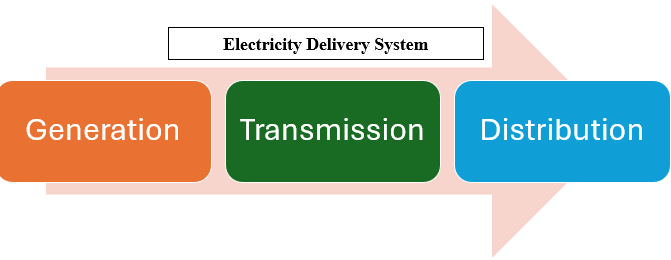Answering the budding energy crisis challenges needs to begin with understanding how the United States delivers one of its most precious commodities – electricity. It seems like everything we use requires more electricity to run. As shopping becomes an experience on our smartphones with fewer trips to the mall, cars transition to electricity, and automation takes over manufacturing and logistics, the electricity demand is going up. At the same time, the supply of energy is under assault and impacted by public policies on the right and the left. A budding energy crisis is brewing as utilities struggle to meet surging demand driven by industrial, data center, and consumer demands for electricity. The installation of renewables as the chief energy source is not keeping pace with demand, and giga-factories are driving the need for more power. U.S. energy challenges are likely to be a 2024 corporate site location trend for both the generation and distribution of electricity to energy-intensive projects.

Electricity is delivered to customers through a system of generation, transmission, and distribution. Electricity generation is the process of converting primary energy sources such as coal, natural gas, or wind into electrical power. Electricity is produced when a magnet is moved near a wire to create a steady flow of electrons. The flow of electrons is an electrical current, or electricity. Any device that completes this task is a “generator.” Primary energy sources, such as wind or natural gas, power these generators by rotating a turbine that is attached to the shaft of the generator. For example, wind blows and rotates those huge turbines seen on wind farms. The turbines then rotate the shaft of the generator, which causes the magnet to rotate inside the wires and create electrical energy. This process is the first step in delivering electricity to consumers and is performed by electricity generators at power plants. From power plants, electricity is then transported to homes, schools, and businesses through transmission and distribution wires. Primary sources of energy can be divided into conventional and renewable fuel types.
Transmission and distribution refer to the different stages of carrying electricity over poles and wires from generators to a home or a business. The primary distinction between the two is the voltage level at which electricity moves in each stage. After electricity has been generated, a system of electrical wires carries the electricity from the source of generation to customers. These lines can be found overhead or sometimes in the ground, and combined, transmission and distribution lines make up what is commonly called “the grid.” Transmission and distribution are two separate stages or systems on the grid. Transmission is the “interstate highway” of electricity delivery. It refers to the part of electricity delivery that moves bulk electricity from the generation sites over long distances to substations closer to areas of electricity demand. Consumers may recognize transmission lines as larger, taller poles/towers carrying many wires over longer distances. Transmission lines move large amounts of power at a high voltage level – a level that is too much to be delivered directly to a home or business. Transmission lines, transformers, substations, and other equipment have voltages of 100 kV (100,000 volts) and above. In most cases, the power moving through the transmission system must be reduced to lower voltage levels by electricity distributors before it can be delivered to a residence or business. Power, specifically the voltage level, sent through transmission lines is reduced, or” stepped down,” via transformers and sent through distribution lines, which are then connected to homes and businesses.
If transmission is the interstate highway of the grid, distribution is the city street. It is the last leg of the delivery of electrical power from generation to the consumer. Power travels on the distribution system at a voltage level that can be delivered directly to a home or business. Distribution lines are the lines many people see along streets. Distribution is the power that turns on and runs the appliances we use every day to keep food fresh, our clothes clean and our homes either cool or warm. The voltage of distribution lines – the lines many people see in their neighborhoods – is approximately 13 kV (13,000 volts); a typical household runs on 110 volts.
The U.S. electricity delivery system is a mix of engineering, government and market forces and its smooth operation where supply meets demand is essential for the nation’s economic success.